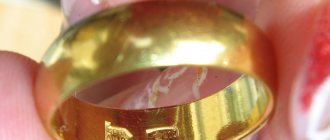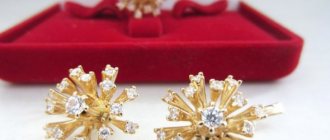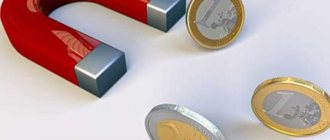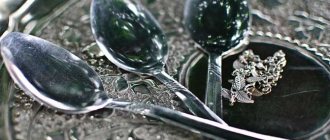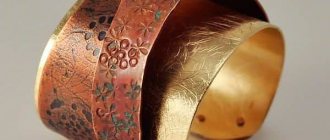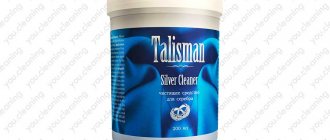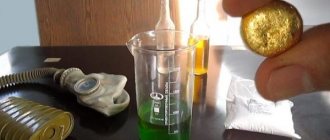Due to the chemical and physical properties of silver, the range of its use is very wide. The alloy can be used to create jewelry; it is included in radio components, circuit boards, microcircuits and other electronic elements. From them, as well as from jewelry scrap, a sufficient amount of material is obtained by melting for further use. Melting silver is not a complicated process if you understand the technology of its implementation, follow the sequence of actions and precautions.
Metal characteristics and melting point
Silver is more than 6,000 years old, as evidenced by archaeological finds in Turkey, Egypt and Iran. The second name of the precious metal is lunar, because according to esotericists, it is this luminary that serves as his patron, and the color resembles the cold shine of the Moon. In the past, this noble metal was valued more than gold.
Silver is characterized by the following physical properties:
- density - 10.6 g/cm3;
- hardness - soft and ductile;
- fusibility - high;
- thermal conductivity is the highest;
- electrical conductivity is the highest;
- reflectivity - yes.
The melting point of silver is 750-760 degrees.
Having decided to smelt silver yourself, you need to know the temperature at which the metal passes from a solid state of aggregation to a liquid state. It depends on the amount of foreign impurities in the composition. If the silver alloy includes a small amount of alloys, then its melting point will not exceed 750-760 degrees. The raw materials used in smelting are called charge. It is heated according to certain rules, taking into account the technological process, as well as observing safety precautions.
Physical characteristics of silver
Having many advantages, silver also has its disadvantages. In particular, rapid oxidation when interacting with hydrogen sulfide, which is in the air. With such a reaction, silver becomes covered with a dark coating.
This is the primary cause of blackening of cutlery. When purchasing material for further melting, it is important to know what characteristics it has:
- Silver melts at a temperature of 961.9 degrees. The boiling process begins at a temperature of 2210 degrees.
- The high reflectivity of silver and its malleability when forged make the metal an excellent material for making jewelry and other products.
- Silver is used in various technical industries due to its thermal conductivity. Clamps and microcircuits are made from it. However, noble metal is often replaced with other materials due to its high cost.
- Silver has a density 10 times greater than the density of water.
If you decide to melt this metal yourself, it is important to know that the melting point of silver is directly related to its purity.
It is this indicator that makes it clear how much pure metal is contained in the alloy, and is determined as a percentage. Interesting! For example, a 925 alloy contains 92.5% silver, the remaining 7.5% is various impurities.
For such a sample, the melting point will be approximately 889 degrees. If the alloy contains less than 90% silver, then the metal will melt at a temperature not exceeding 770 degrees. The most common silver samples used in the jewelry industry are: 750, 800, 875, 916, 925, 960. The 999 sample is extremely rarely used by craftsmen, since this material is too soft.
You may be interested in: 999 silver – how much does 1 kilogram cost?
Principles of the procedure
What can be used for smelting? Absolutely all silver that is not used for its intended purpose is suitable for this procedure: fragments of jewelry, those that were left without a pair, microcircuits and circuit boards from radio components, production waste, ore, etc. Metal extraction occurs using the following technology.
- The raw materials are crushed to make it easier to work with.
- It is fired to remove flammable particles from the composition.
- Passed through a centrifuge to separate the molten precious metal from other components. The only exception is lead.
- Melting. As it cools, the liquid lead separates from the noble metal, which solidifies faster.
- It undergoes electrolytic treatment, which allows you to filter the precious metal dissolved in nitric acid from impurities.
Finally, chemical processing is carried out, thanks to which pure silver of the highest quality is obtained. To do this, the white metal is dissolved in a mixture of sulfuric acid, hydrochloric acid and ferric chloride, precipitating it with zinc. The required material is released from the solution in the form of sand, which is then washed and melted.
Characteristics and properties of metal
Silver is an inert metal and in its pure form does not oxidize in air. It is quite refractory - to transform it into a liquid state, you will need to heat the substance to a temperature of 962 degrees Celsius, and it will be possible to bring it to a boil at 2210 ° C. This is a heavy substance - a cube with centimeter sides will weigh 10.5 grams.
The element has high ductility, as well as the highest coefficient of thermal conductivity and electrical conductivity among metals, due to which it is widely used in various industries. For example, in the manufacture of batteries with extended service life and all kinds of electronic devices.
Silver lends itself well to forging, which makes it possible to produce exquisite jewelry from it. Widely used in medicine as a raw material for the production of instruments and medicines.
Melting silver at home
Melting silver is quite possible even without special knowledge and skills. The only condition is the presence of a suitable burner or stove. The equipment must meet the required parameters and be heated to a temperature suitable for these purposes.
Equipment and materials
When deciding to smelt silver, you need to make sure you have the necessary tools and materials. To work you will need:
- silver scrap;
- burner;
- fireproof container (crucible);
- casting mold;
- borax;
- forceps;
- metal container with cold water.
Crucible - container for melting silver
When everything you need is at hand, you can begin the experiment.
Batch preparation
To remelt silver, you will need to prepare a charge. To do this, scrap is crushed using pliers or metal scissors and mixed with borax (can be purchased at a pharmacy). The optimal composition ratio is 10:1, i.e. For every 10 g of precious metal, take 1 g of a chemical compound. The latter protects silver from oxidation. When heated, the borax turns green, acquires the viscosity of thick honey and burns out all the oxides from the alloy. The mixture is melted in a fireproof crucible, which is held with special tongs with long jaws.
Nuances of the smelting process
During melting, safety precautions must be observed. Due to the release of brown toxic gas, you need to work in a well-ventilated area with an open window or an exhaust hood turned on. It is advisable to protect yourself with a respirator and safety glasses.
In addition, silver in a heated liquid state has the property of absorbing oxygen. Each unit volume of metal absorbs 20 units of O2 volume. During the solidification of the alloy, the gas dissolved in it begins to release outward, breaking the hard crust formed on the surface. This leads to the appearance of splashes that fly in different directions in the form of streams and drops. The picture is, of course, beautiful, but very dangerous, because... Liquid metal coming into contact with an exposed body or surface can cause serious burns.
All flammable substances and flammable items are removed from the workplace. They wear an apron on top of their clothes or work in a special suit made of natural fabrics; their hands are protected with thick gloves.
The charge is placed in a heated crucible and exposed to it with a gas burner or placed in a furnace. The material is kept at high temperature until it completely melts. You can understand that this happened by the appearance of the surface of the silver liquid. It will be as shiny as mercury. If the surface does not shine, it means that the metal has not yet completely melted.
How to remove impurities at home
This procedure is also feasible, but I would like to draw your attention to the fact that working with concentrated acids requires extreme caution and should be carried out in a ventilated room.
The size intended for cleaning is placed in a glass container, filled with concentrated nitric acid and heated until the silver is completely dissolved. After this, regular table salt is added to the solution. The resulting silver chloride precipitates. The resulting substance is washed with water and filtered.
The next stage is metallization of the substance. Silver chloride is poured into hydrochloric acid and precipitated using fine zinc filings and heat. The resulting dark gray sand is ready for melting.
Features of melting silver in a microwave oven
If you don’t have a burner or oven, you can melt silver using a microwave. This is a quick and easy way to melt silver at home.
- Prepare a thermal protective fence into which a fireproof container is installed.
- The charge is poured into the crucible.
- The container is placed in a thermal protector and placed in the microwave oven at maximum power.
- The melting time is maintained, approximately 30-35 minutes.
- The molten metal is then removed and poured into the prepared mold.
Another way to melt silver is with a blowtorch. In this case, the crucible with the charge is located in a thick pipe made of fireclay clay of a larger diameter.
Silver smelting can be done with a blowtorch
Often, a special melting furnace is used to melt silver and other metals, which you can purchase or build yourself. It is installed in a separate room. The melting process is the same as when working with other equipment.
The result of melting silver at home depends on the expected complexity of the work. If you need pigs of any shape, then there will be no difficulties. When you want to get some kind of jewelry or decorative item, it is better to contact a craftsman.
How raw materials are processed
The raw materials for obtaining the substance can be scrap of precious metals, industrial waste, or mined ore. To extract the precious metal, the following processing steps are applied step by step:
- Grinding. Recycled raw materials are crushed to obtain a fine mass.
- Firing allows you to remove flammable debris from the composition.
- Centrifugation is the separation of molten silver from other metals except lead.
- Remelting. During the cooling process in the crucible, liquid lead is separated from the noble metal, which solidifies faster.
- Electrolytic processing. The precious metal, dissolved in nitric acid, is exposed to electricity, causing the anode to attract impurities and silver to crystallize around the cathode.
- Chemical treatment allows you to obtain a substance of 1000 samples. The noble metal is dissolved using sulfuric and hydrochloric acids and ferric chloride, precipitating it with zinc. Silver is released from the solution in the form of sand, which is washed and remelted.
Melting at home
In order for the melting to take place correctly, you need to do some work first. You need to make your own or purchase a crucible (melting container). You will also need a gas or gasoline burner, heat-resistant tongs, scales, and a mold for pouring liquid silver.
Batch preparation
The charge is a mixture of melted metal and borax. In order to speed up the process of transition of the material from solid to liquid, you must first break the silver items into small pieces using pliers. Then prepare the mixture in the correct ratio between metal and borax. For 10 parts by weight of the charge there should be 1 part of borax.
This substance is necessary to protect the melt from impurities of oxides of other metals and from oxidation by oxygen. In addition, borax improves the sliding of liquid along the walls of the crucible.
Melting process
At home, it is especially important to ensure safety. There should be no flammable substances or flammable objects in the workplace. And it is also necessary to ensure effective ventilation. Eyes should be protected with special goggles, hands with thick gloves. And that's why.
Silver in the molten state absorbs oxygen very strongly. For every unit volume of metal there are 20 units of oxygen. When the melt begins to solidify, the gas dissolved in it violently releases out, breaks the hard crust that has formed on the surface and is sprayed around in beautiful and extremely dangerous high-temperature jets and drops.
The prepared mixture is loaded into a well-heated crucible and then heated using a burner until it completely turns into liquid. In this state, the surface of the molten metal should be shiny like mercury. If the surface does not shine, it means that the silver has not yet completely melted.



